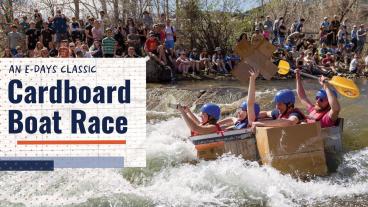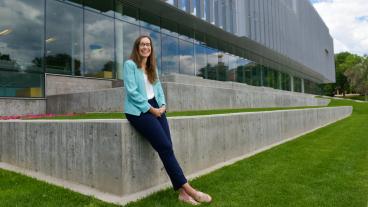A Colorado School of Mines professor and graduate student spent more than a month at sea researching the relationship between earthquakes, gas hydrates and underwater landslides off the coast of New Zealand.
Brandon Dugan, Baker Hughes Chair and associate professor of geophysics, and Sebastian Cardona, a third-year PhD student studying geology, were among the 30 scientists aboard the International Ocean Discovery Program Expedition 372 research vessel, at sea from Nov. 26 to Jan. 4. It was the first expedition for Cardona and sixth for Dugan, who has now spent almost a whole year at sea in total.
Cardona was one of four sedimentologists on the ship and Dugan was a member of the team responsible for physical properties and downhole measurements. In addition to exploring the relationship between gas hydrates and underwater landslides, researchers also worked to characterize the sediments, fault zone structures and physical properties associated with recurring shallow slow slip events along the Hikurangi subduction interface.
The expedition focused its efforts on an area that had previously experienced a submarine landslide and has been extensively imaged with marine geophysical data. Underwater landslides are much larger than those on land, often occurring on slopes as small as one to two degrees, and can move hundreds of kilometers in a matter of hours.
“For the last fifteen years, I have been interested in how landslides happen in the deep ocean,” Dugan said. “Specifically, how different components add up to create either landslides that cause big disasters, like tsunamis, or that create neat geological features that don’t affect anyone but are interesting geologically.”
Life on the research vessel is physically demanding, broken up into two 12-hour shifts – noon to midnight and midnight to noon, seven days a week. Alongside the 30 scientists and 15 technicians, there were nearly 75 crew members responsible for the maintenance of the ship and meals, leaving the scientists free to focus on their research.
“It’s definitely a project of passion,” Dugan said. “You are away from everything else, surrounded by 30 other scientists talking about their work and doing 100 percent science the whole time.”
The scientists came from all over the world, creating a very diverse culture onboard. For Cardona, this diversity was both unique and informative, with everyone treated equally despite differences in research experience.
“At first I was afraid of applying because I felt as a graduate student that my research was not that significant,” Cardona said. “But there is a lot of support and everyone is treated equally while doing lots of science.”
Onboard, the scientists were tasked with describing what they were seeing and learning. Once home they could start interpreting what they have learned from the data.
Using samples brought back from the expedition, Dugan will be investigating what forces are necessary to cause a landslide. Additionally, he will be measuring the permeability of the samples and is working with a colleague at New Mexico Tech to analyze the composition of the clay layers found at the landslide to understand how it evolved and what triggered it.
Cardona will be analyzing thin sections to identify and interpret features of deformation that can help reconstruct how the landslide occurred and the main factors that triggered it.
For Cardona, a geologist who studies the earth, getting the opportunity to obtain deep sea cores felt for him the way an astronaut may feel about going to space.
“I am trying to spread the message that as a graduate student you can apply to these programs and be accepted to go,” Cardona said.
Another unique component of IODP is its recent push to encourage education and outreach. Onboard, Dugan participated in conference calls with students on shore and back at Mines discussing what they were learning onboard.
“We were doing science for the sake of science,” Dugan said. “But, also, science for the general population.”
Photo credit: Tim Fulton, International Ocean Discovery Program, JOIDES Resolution Science Operator (IODP-JRSO)
CONTACT
Katharyn Peterman, Student News Reporter | kpeterma@mymail.mines.edu
Emilie Rusch, Public Information Specialist, Colorado School of Mines | 303-273-3361 | erusch@mines.edu



